
Reflections on reflections
When we think about reflections in water, we usually think of calm lakes and trees on the shore opposite to us. Or clouds. Or at least that’s what I think of: Everything is so far away, that it seems to be reflected at an axis that is a horizontal line far away from us.
Then the other day I walked along Kiel Fjord and it hit me that I had never actually consciously observed reflection of things that are located close to my position, and especially things who are not pretty much equidistant to me, but where one end is a lot closer than another one. Consider the picture below: Do you notice something that looks kinda odd to you (while at the same time looking super familiar)?
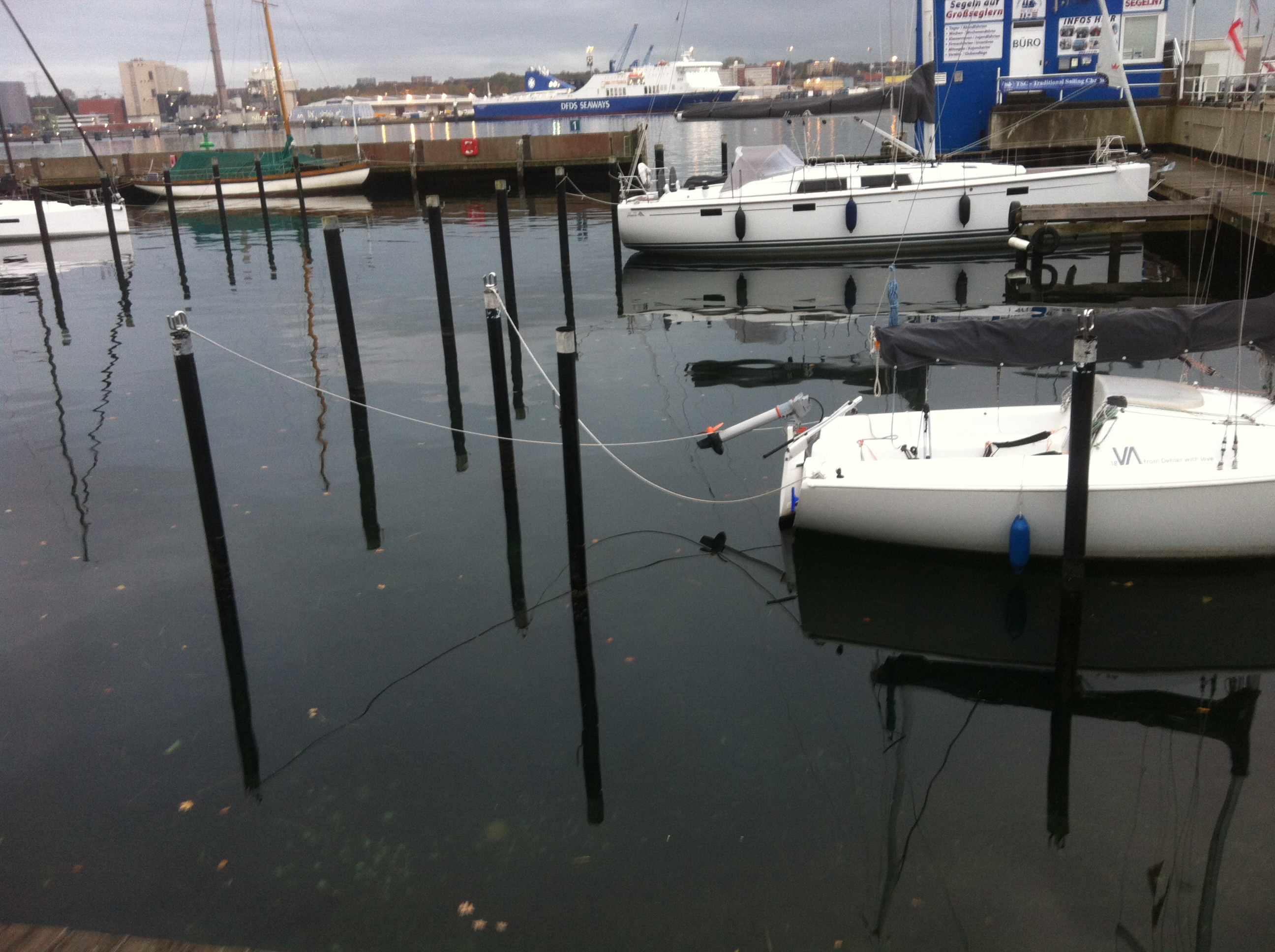
If you are wondering what I mean, I marked it in red in the picture below: The rope and its reflection! It’s embarrassing to say that (as someone who has been sailing A LOT since the age of 7) this was the first time I really noticed, but it struck me how the maximum of the parable of the reflected rope isn’t right below the minimum of the parable of the rope, but seems shifted to the left. Of course this is exactly how it should be if we think about the optics, but I was really shocked that I had never noticed before and never thought about it before! I bet if I had had to draw the reflection I would have done it wrong and probably not even noticed…
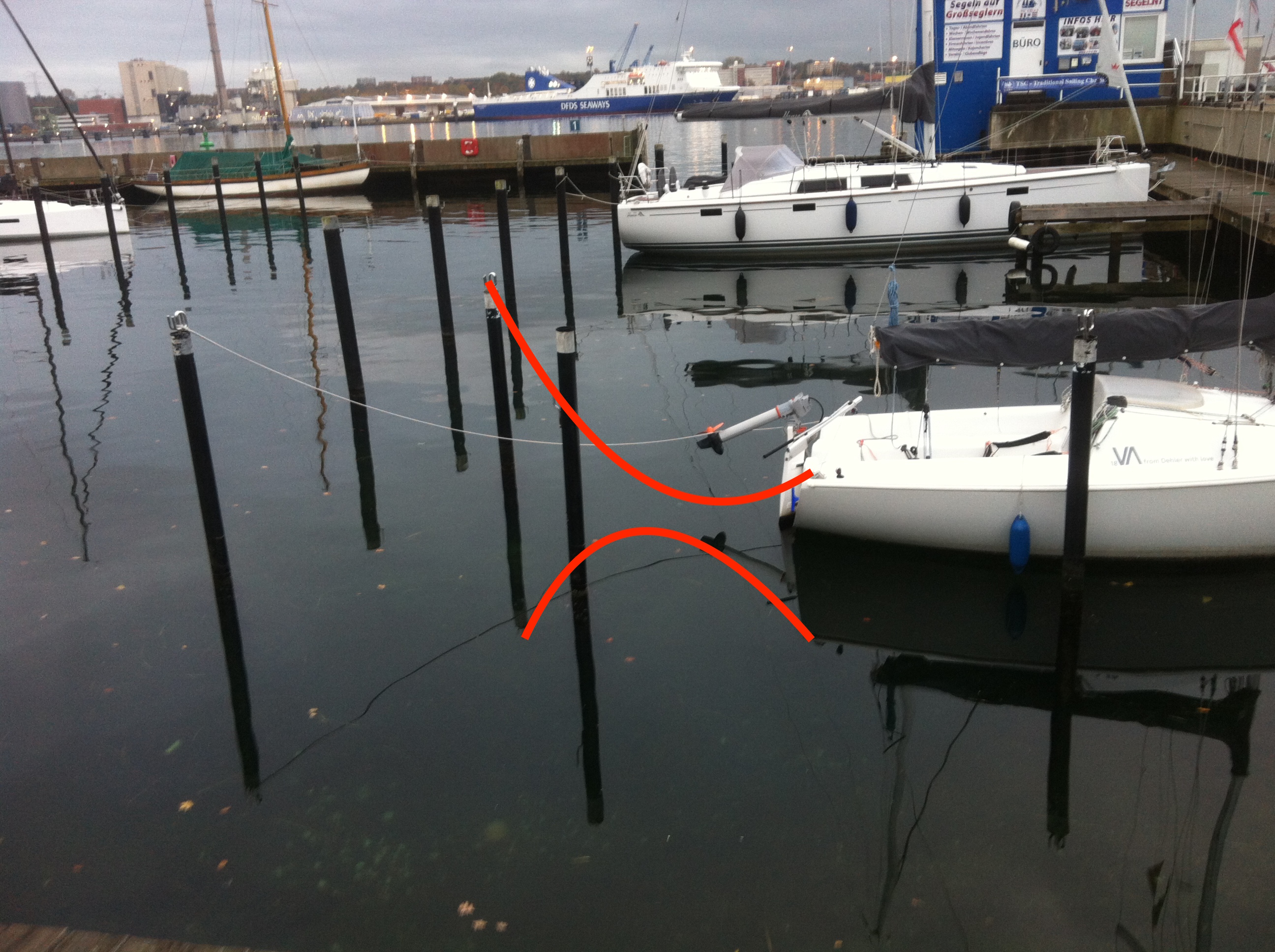
Here is another picture to show you what I mean. This is what it looks like:
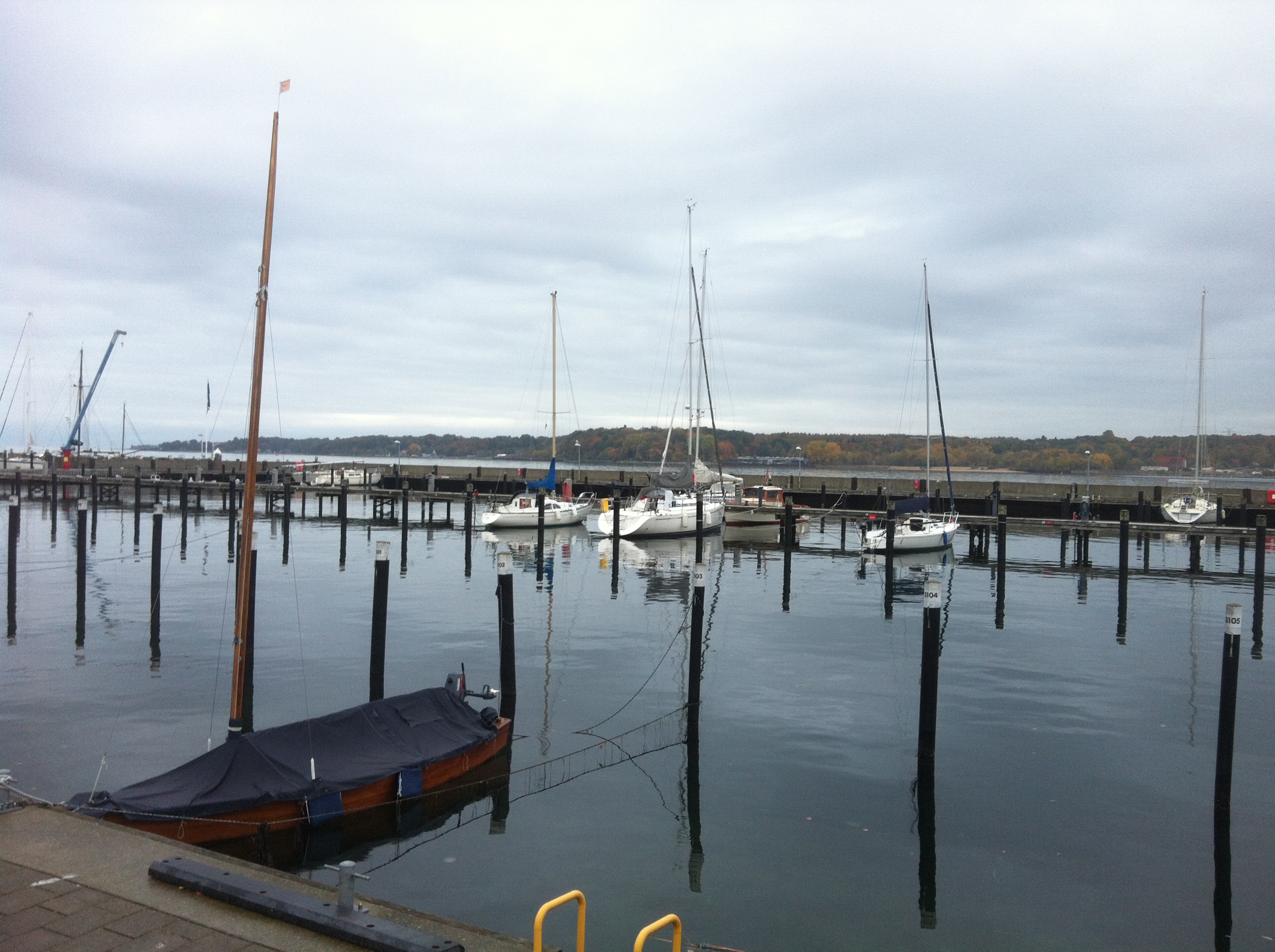
Below I’ve drawn in the original objects in blue, the axis of reflection in red and then the reflection in green:
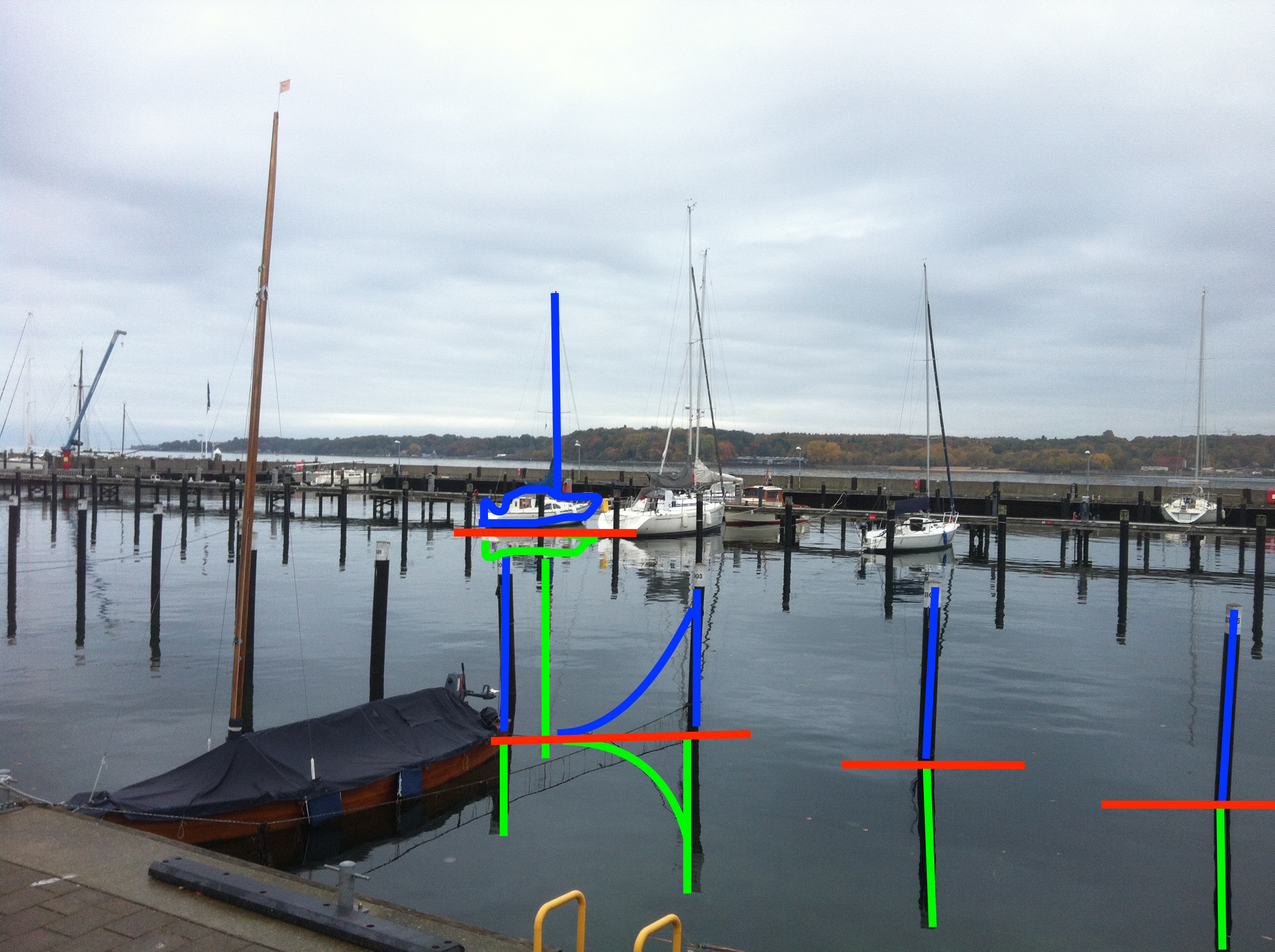
So far, so good, everything looking the way it’s supposed to look. Right? Then look at the picture below:
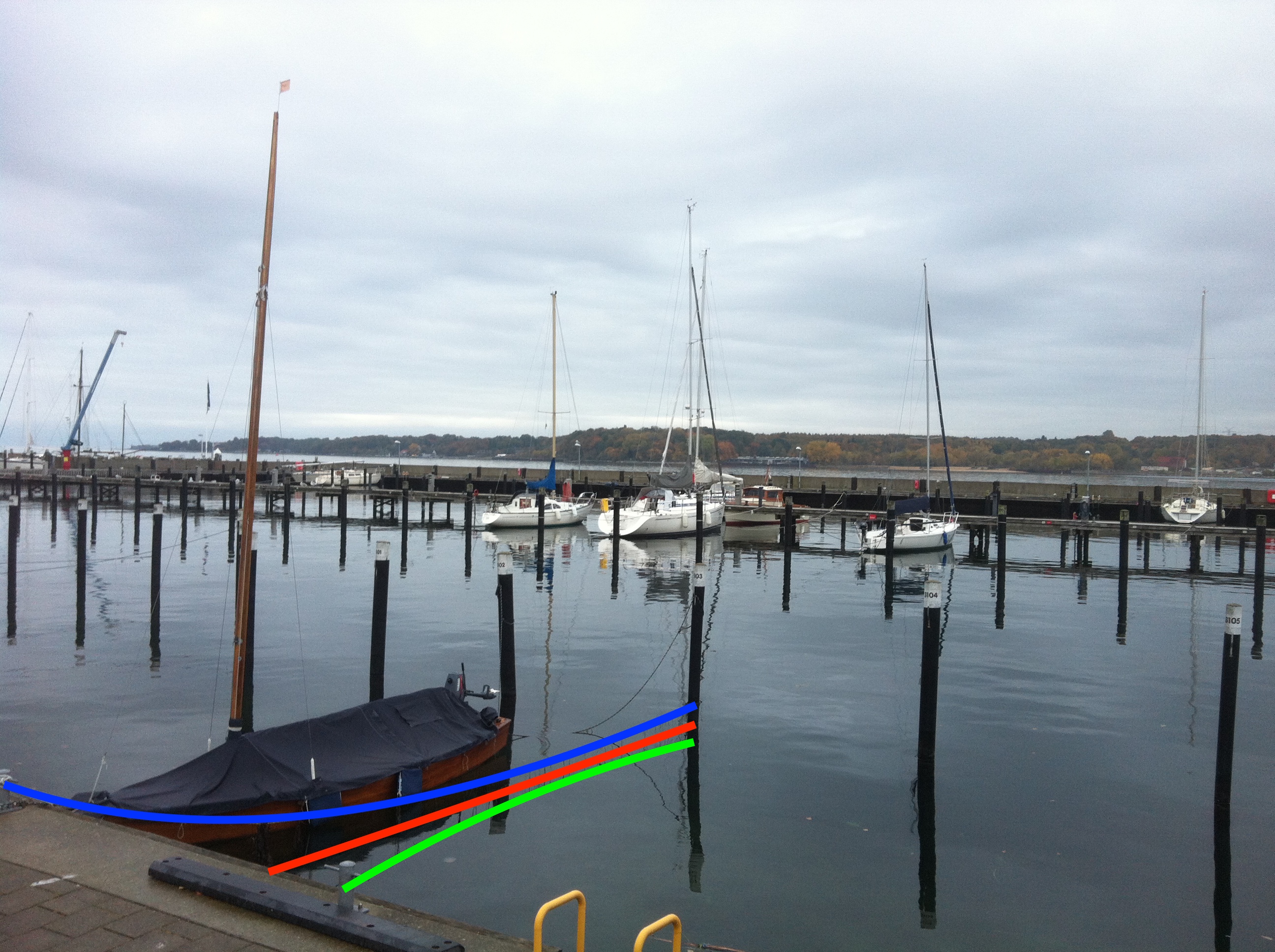
Sorry if this seems obvious to you, but I’m fascinated with this right now :-)
But it leads to another interesting thought: Asking people to draw stuff in order to both check their understanding and also make them reflect on their understanding. I recently had the opportunity to observe a class of master students draw the SST of the mean state of the Pacific Ocean (which was an exercise that I had suggested in connection with a class on El Nino. I thought it would be neat to have them draw the mean state and then later the anomalies of El Nino and La Nina to activate prior knowledge) and it was surprising how difficult that was even though I’m sure they would all have claimed to know what the mean state looks like. Having to draw stuff really confronts us with how sure we are of things we just assumed we knew…
And then I’m pretty sure that once we’ve drawn something that we have constructed ourselves from what we knew (rather than just copied a drawing from the blackboard or a book, although I think that also helps a lot), we are a lot less likely to forget it again.
Anyway, this is a type of exercise I will use — and recommend — a lot more in the future!